Juan de Flandes, whose name translates to "John of Flanders," stands as a pivotal yet sometimes underappreciated figure in the rich tapestry of late 15th and early 16th-century European art. Active primarily in Spain, his Flemish origins and training endowed him with a technical mastery and stylistic sensibility that, when fused with the demands and tastes of his Spanish patrons, produced a unique and influential body of work. His career, flourishing from approximately 1496 until his death in 1519, coincided with a period of immense cultural and political transformation in Spain, under the reign of the Catholic Monarchs, Isabella I of Castile and Ferdinand II of Aragon.
This exploration will delve into the life and oeuvre of Juan de Flandes, examining his Netherlandish roots, his significant tenure as a court painter to Queen Isabella I, his stylistic characteristics, his major works, his interactions within the artistic milieu of his time, and his lasting legacy within the annals of art history. His contributions were crucial in bridging the artistic traditions of Northern Europe with the burgeoning Renaissance spirit in Spain.
Early Life and Netherlandish Foundations
The precise birthdate of Juan de Flandes is not definitively known, but art historians generally place it around 1460. As his name suggests, he hailed from Flanders, a region encompassing parts of modern-day Belgium, Netherlands, and France, which was then under Burgundian ducal rule and a vibrant center of artistic innovation. The cities of Ghent and Bruges were particularly renowned for their schools of painting, and it is widely accepted that Juan de Flandes received his artistic training within this milieu, specifically the Ghent-Bruges school.
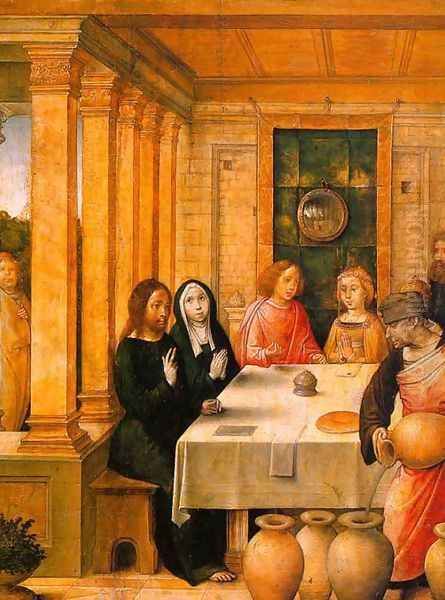
This school, building on the revolutionary oil painting techniques pioneered by artists like Jan van Eyck and Robert Campin earlier in the 15th century, was characterized by its meticulous attention to detail, luminous color, complex iconography, and profound spiritual intensity. Masters such as Rogier van der Weyden, known for his emotionally charged religious scenes, Hugo van der Goes, whose Portinari Altarpiece had a significant impact even in Italy, and Hans Memling, celebrated for his serene Madonnas and precise portraiture, were dominant figures whose influence would have been pervasive. Another contemporary, Gerard David, was also a leading proponent of the Bruges school, known for his solemn and monumental figures. The training Juan de Flandes received would have instilled in him a mastery of the oil medium, an ability to render textures and light with astonishing realism, and a deep understanding of Christian iconography. His early works, though few survive or are definitively attributed to this period, would likely reflect these prevailing Netherlandish characteristics.
The economic prosperity of Flanders, driven by trade and textile industries, supported a thriving art market. Patrons, both ecclesiastical and secular, commissioned a wide array of works, from large altarpieces to smaller devotional panels and portraits. This environment fostered a high degree of technical skill and artistic competition, preparing painters like Juan de Flandes for successful careers, even abroad.
Arrival in Spain and Royal Patronage
The exact circumstances of Juan de Flandes's journey to Spain remain somewhat obscure, but he is first documented in Castile in 1496. This was a momentous year for Spain, marking a period of consolidation and expansion following the completion of the Reconquista in 1492 and the voyages of Columbus. Queen Isabella I of Castile was a formidable ruler, a devout Catholic, and a significant patron of the arts. Her court attracted artists and scholars from various parts of Europe, and she showed a particular fondness for Netherlandish painting.
Juan de Flandes entered the Queen's service as a "pintor de la cámara" (court painter), a prestigious position that provided him with a regular salary and direct access to royal commissions. He shared this role with other artists, notably Michel Sittow (also known as Miguel Sithium), an artist of Netherlandish training born in Reval (modern-day Tallinn, Estonia), who also enjoyed Isabella's favor. The Queen's collection already included works by prominent Flemish masters, and her preference for their detailed realism and pious sentiment was well-established.
During his tenure with Isabella, which lasted until her death in 1504, Juan de Flandes was primarily engaged in producing small-scale devotional panels and portraits. The Queen commissioned a remarkable series of small panels, likely intended for a portable oratory or private devotional use, depicting scenes from the lives of Christ and the Virgin. These works, often exquisitely detailed and jewel-like in their execution, showcased his Flemish training to full effect. His salary was substantial, indicating the high regard in which his talents were held. This period was crucial in establishing his reputation in Spain.
Artistic Style: A Synthesis of Traditions
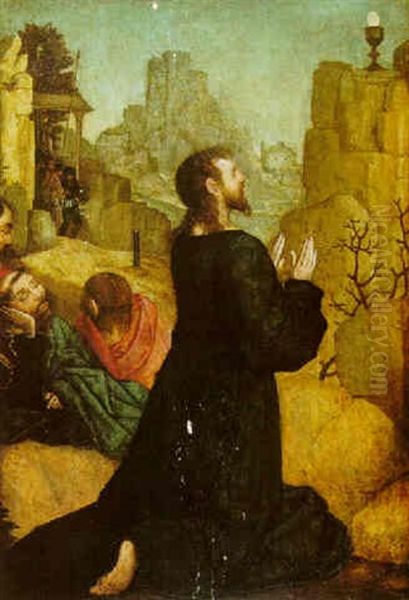
Juan de Flandes's artistic style is a fascinating amalgamation of his Northern European heritage and the evolving artistic landscape of Spain. His grounding in the Ghent-Bruges tradition is evident in several key aspects of his work. He possessed an exceptional ability to render minute details with precision, from the delicate folds of drapery and the textures of fabrics to the subtle nuances of human expression and the intricacies of landscape backgrounds. His use of oil paint allowed for rich, luminous colors and smooth, almost invisible brushwork, characteristic of Early Netherlandish painting.
His palette often favored cool tones, particularly blues, greens, and grays, which lent a distinct atmosphere to his scenes. Figures in his paintings are typically slender and elegant, sometimes with a slightly melancholic or contemplative air. He demonstrated a sophisticated understanding of light and shadow, using it to model forms, create a sense of depth, and enhance the emotional impact of his compositions. This careful handling of chiaroscuro, while rooted in Flemish practice, would also resonate with developing Spanish artistic sensibilities.
While in Spain, his style did not remain static. He adapted to the preferences of his patrons and the artistic currents around him. There is a discernible shift in some of his later works towards slightly broader handling and perhaps a greater emphasis on monumental forms, possibly influenced by the scale of commissions for larger altarpieces. Spanish art of the period was also beginning to absorb influences from the Italian Renaissance, brought by artists like Pedro Berruguete, who had worked in Italy (notably at Urbino alongside Justus of Ghent, another Fleming in Italy) before returning to Spain and also serving Isabella I. While Juan de Flandes remained fundamentally a Netherlandish painter, the Spanish environment likely encouraged a certain clarity of composition and a directness of emotional expression.
His portraiture, though less numerous than his religious works, also reveals his skill. He captured not only the likeness of his sitters but also a sense of their inner character, a hallmark of the best Netherlandish portraitists like Van Eyck or Memling.
Masterpieces of Devotion and Portraiture
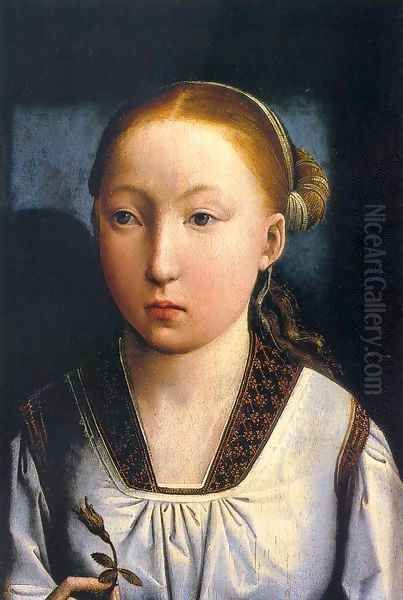
Juan de Flandes's oeuvre includes several significant works that exemplify his artistic prowess and his contribution to Spanish art. Among the most important are the panels from the Polyptych of Isabella the Catholic. This ambitious project, likely comprising dozens of small panels (around 47 are believed to have existed), depicted scenes from the New Testament. Many of these panels are now dispersed across various museums worldwide, including the Royal Palace in Madrid and the Kunsthistorisches Museum in Vienna. Works like The Marriage Feast at Cana (c. 1500-1504, Metropolitan Museum of Art, New York) from this series showcase his narrative skill, delicate execution, and ability to manage complex multi-figure compositions within a small format. The figures are elegant, the colors vibrant, and the attention to detail, such as the still-life elements on the table, is remarkable.
Another key work is Christ Appearing to His Mother with the Resurrected (c. 1496, National Gallery of Art, Washington D.C.), which is notable for its tender emotionality and sophisticated use of interior space. The interaction between Christ and the Virgin is portrayed with a quiet dignity, and the architectural setting is rendered with careful perspective.
His later period, after Queen Isabella's death, saw him undertake larger commissions. The high altarpiece for Palencia Cathedral is perhaps his most significant large-scale achievement. Although he did not complete the entire project before his death, the panels attributed to him, such as The Crucifixion, demonstrate his ability to adapt his meticulous style to a more monumental format. The Crucifixion (Museo del Prado, Madrid, originally from Palencia Cathedral) is a powerful and poignant depiction of the event, with a dramatic sky, expressive figures, and a characteristically cool color scheme. The sorrow of the Virgin and St. John is palpable, rendered with a subtlety that avoids excessive melodrama.
Other notable works include the Salome with the Head of John the Baptist (Musée d'Art et d'Histoire, Geneva), which displays a more dramatic intensity, and various portraits, such as the Portrait of an Infanta (possibly Catherine of Aragon, Thyssen-Bornemisza Museum, Madrid), which combines Netherlandish precision with a regal presence. The Baptism of Christ altarpiece, created for the Carthusian monastery of Miraflores, further underscores his mastery in depicting religious narratives with clarity and devotional feeling.
Life After Isabella I: The Palencia Period
The death of Queen Isabella I in 1504 marked a turning point in Juan de Flandes's career. While he lost his primary royal patron, his reputation was well-established, and he continued to receive significant commissions, particularly from ecclesiastical authorities. He is documented in Salamanca in 1505, where he worked on an altarpiece for the University chapel, collaborating with other local artists, though his role was principal. This project included scenes from the life of St. Jerome.

By 1509, Juan de Flandes had settled in Palencia, a city in Castile and León, where he would spend the remainder of his life. His most important patron during this period was Bishop Juan Rodríguez de Fonseca, an influential figure in the Spanish church and administration. It was for Fonseca that he undertook the commission for the high altarpiece (retablo mayor) of Palencia Cathedral. This was a massive undertaking, and Juan de Flandes was responsible for a series of large panels depicting scenes from the life of Christ. These panels, including the aforementioned Crucifixion, The Agony in the Garden, and The Resurrection, are among his most mature and powerful works. They demonstrate his ability to maintain his characteristic refinement even on a larger scale, adapting his compositions to the demands of a grand altarpiece intended for public veneration.
His workshop in Palencia likely included assistants, given the scale of some of these later commissions, although the extent of workshop participation in his surviving works is a subject of ongoing scholarly discussion. He continued to work actively until his death, which is recorded as having occurred in Palencia before October 1519, as his wife, "la viuda de Juan de Flandes," is mentioned in documents at that time.
Relationships with Contemporaries and Artistic Milieu
Juan de Flandes operated within a dynamic artistic environment in Spain. As a court painter, he would have been aware of, and likely interacted with, other artists serving the Crown. His relationship with Michel Sittow is particularly noteworthy, as they were both foreign-born painters of Netherlandish training employed by Isabella I. While their individual styles had distinct nuances, they shared a common artistic heritage.
The Spanish art scene at this time was diverse. Native Spanish artists like Fernando Gallego and Bartolomé Bermejo were active, often blending Gothic traditions with emerging Renaissance and Flemish influences. Pedro Berruguete, as mentioned, represented a more direct engagement with Italian Renaissance ideas, though his earlier training also showed Flemish characteristics. The presence of artists like Juan de Flandes and Michel Sittow significantly reinforced the prestige of Netherlandish art in Spain.
There would have been an element of competition for prestigious commissions, not only among artists based in Spain but also from imported artworks. Wealthy patrons, including the monarchy and high clergy, often collected paintings directly from Flanders. However, Juan de Flandes's consistent employment and the high prices his works commanded suggest he was highly successful in this competitive environment. His economic success is documented, indicating that his skills were highly valued.
The influence of Italian art was gradually increasing in Spain during his lifetime, with artists like Leonardo da Vinci, Raphael, and Michelangelo becoming towering figures of the High Renaissance. However, the deeply ingrained taste for Northern European realism, detail, and devotional intensity, particularly in Castile, ensured a continued demand for artists working in the Flemish tradition. Juan de Flandes, therefore, found a receptive audience for his particular skills.
Later Years, Legacy, and Art Historical Position
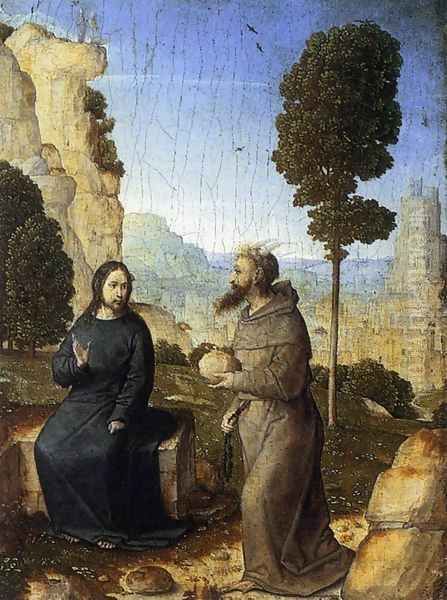
Juan de Flandes died in Palencia in 1519, leaving behind a significant body of work that had a lasting impact on Spanish art. He is considered one of the most important painters active in Spain at the turn of the 16th century and a key figure in the Spanish Renaissance, particularly in its Hispano-Flemish phase.
His primary legacy lies in his successful fusion of Netherlandish technique and sensibility with Spanish devotional needs and aesthetic preferences. He demonstrated how the meticulous realism and rich oil glazes of the Flemish school could be adapted to create powerful and emotionally resonant religious imagery for Spanish patrons. His small, jewel-like panels for Queen Isabella set a standard for private devotional art, while his later, larger altarpieces, such as those for Palencia Cathedral, showed his versatility and ability to command monumental compositions.
While direct, traceable influence on much later Spanish Golden Age masters like Diego Velázquez or Francisco de Zurbarán is complex to assert, Juan de Flandes contributed to a broader artistic culture in Spain that valued naturalism, psychological insight in portraiture, and profound religious sentiment. He helped to solidify the technical foundations of oil painting in Spain and provided exemplars of high-quality craftsmanship. His work, alongside that of other Netherlandish and Netherlandish-influenced artists, enriched the Spanish artistic landscape and contributed to the development of distinct regional schools. For instance, the continued appreciation for detailed realism in Seville, which later produced Zurbarán and Velázquez, can be seen as part of a longer tradition that valued the verisimilitude pioneered by Northern artists.
Art historians today recognize Juan de Flandes for the exceptional quality and refinement of his work. His paintings are prized for their delicate beauty, their subtle emotional depth, and their technical mastery. While perhaps not as widely known to the general public as some of his Italian contemporaries or later Spanish masters, his contribution is undeniable. His works are held in major museums across the world, including the Museo Nacional del Prado in Madrid, the Metropolitan Museum of Art in New York, the National Gallery in London, and the Kunsthistorisches Museum in Vienna, attesting to his international significance.
Conclusion: An Enduring Influence
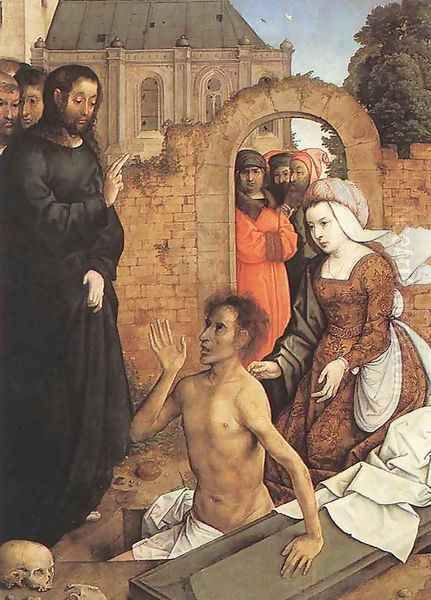
Juan de Flandes, the "Master from Flanders," carved out a distinguished career in Spain, becoming a favored artist of one of Europe's most powerful queens and leaving an indelible mark on the art of his adopted country. His journey from the vibrant artistic centers of Flanders to the royal court of Castile and the cathedral city of Palencia is a testament to the pan-European nature of artistic exchange during the Renaissance.
His ability to synthesize the meticulous detail and luminous technique of the Ghent-Bruges school with the spiritual fervor and evolving tastes of Spain resulted in a body of work that is both aesthetically captivating and historically significant. From intimate devotional panels to grand altarpieces, his paintings speak to a profound artistic vision and an unwavering commitment to quality. Juan de Flandes remains a crucial figure for understanding the complex interplay of artistic traditions at a pivotal moment in European art history, a bridge between the Northern and Spanish Renaissances, whose delicate yet powerful art continues to resonate with viewers centuries later. His legacy is not merely in the beauty of his individual works, but in his role as a conduit for artistic ideas and a master craftsman who enriched the cultural heritage of Spain.